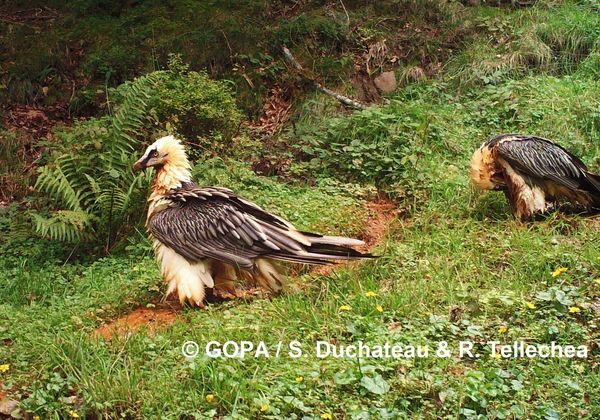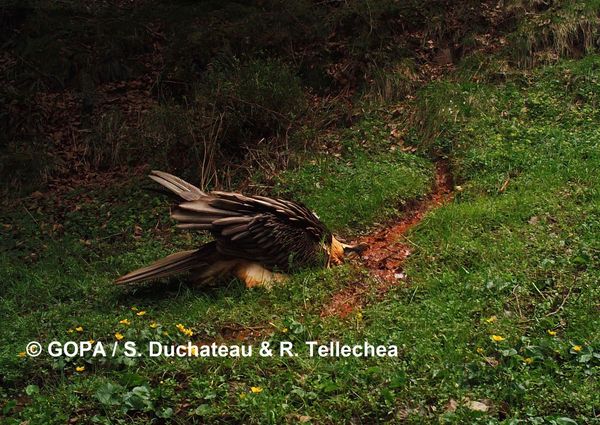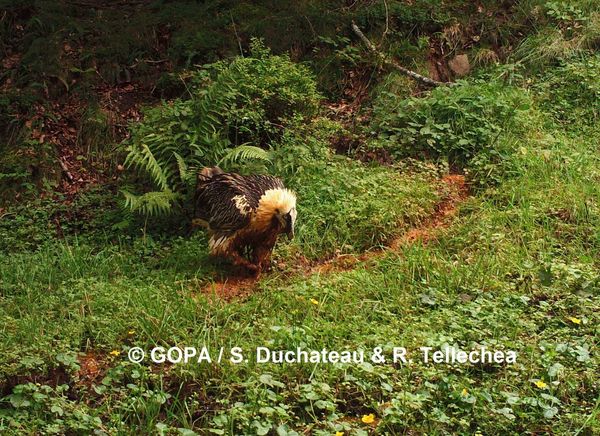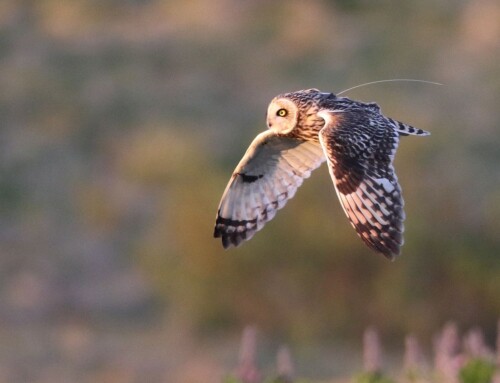 LINKED PAPER
LINKED PAPER
Adult colouration of the Bearded Vulture (Gypaetus barbatus) in the Pyrenees: relation to sex, mating system and productivity. Duchateau, S., Chéliz, G., Gil, J.A., & López-López, P. 2022 Ibis. doi: 10.1111/ibi.13032 VIEW
Adult Bearded Vultures (Gypaetus barbatus) typically show orange colouration that is the result of mud baths in ferruginous substrates. Such a cosmetic colouration is not a common phenomenon among bird species. Several visual signalling hypotheses can be proposed to explain this behaviour. Colouration could be used to signal: 1) dominance towards conspecifics, with darker birds being dominant (“status-signalling hypothesis”); 2) sex (“gender signalling hypothesis”) since females are usually more intensely coloured; 3) individual quality for mate choice (“quality signalling hypothesis”); and/or 4) different reproductive strategies between individuals (e.g., in polyandrous trios).
A team of Spanish and French researchers (from Fundación para la Conservación del Quebrantahuesos, Groupe Ornithologique des Pyrenees et de l’Adour and from the University of Valencia) monitored breeding Bearded Vultures in central and western Pyrenees and analysed the data. Overall, 162 individuals from 70 reproductive units (pairs and trios) were classified as having white, pale, medium or dark colouration. The relationships with sex, mating system and average productivity across years were analysed. The most common form was medium (67%), then pale (22%), dark (9%) and white (2%) morphs.

Figure 1 Bearded Vultures © Stéphane Duchateau.

Figure 2 Bearded Vultures © Stéphane Duchateau.

Figure 3 Bearded Vultures © Stéphane Duchateau.
Overall, females were darker than males but with a large overlap. In trios, dominant males were darker than subordinate males, although differences were not statistically significant. The number of years of territory occupation, mating system and their combination (but not colouration) were the best predictors of average productivity. These results do not support the “gender signalling hypothesis”. The “reproductive strategy signalling hypothesis” might be supported as beta males were, on average, paler than males in pairs but this topic requires further investigation. Finally, females (thought to be dominant due to their slightly larger size) were on average darker than males agreeing with the “status-signalling hypothesis”, although an experimental approach would be needed to formally test this hypothesis.
Image credit
Top right: Francesco Veronesi © CC BY-SA 2.0 Flickr.
If you want to write about your research in #theBOUblog, then please see here.




